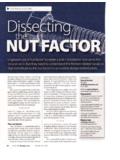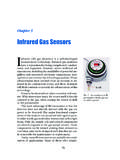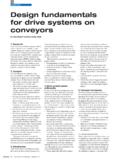Transcription of Boiler Fitness Survey for Condition Assessment of ...
1 Babcock & NakonecznyBabcock & WilcoxBarberton, Ohio, Fitness Survey for Condition Assessment ofIndustrial BoilersBR-1635 AbstractIn today s markets, reducing costs and optimizing the pro-duction of installed capacity is essential. The electric utilitieshave depended upon life extension of existing boilers since theearly 1980s to meet generation needs. Similarly, general indus-try faced with competition and cost control are looking to ex-tend the lives and in many instances upgrade the capacities ofexisting boilers.
2 The Babcock & Wilcox (B&W) Boiler fitnesssurvey has proven to be an effective program for analyzing thecondition of aging boilers. The extent of the Fitness Survey isgeared to the level of cost and effort that will provide the plantowner with the information needed to make decisions for futureoperation of the Boiler (s); as such, the Survey can be tailored tothe needs of the customer. The following describes the methodof developing the scope of the Boiler Fitness Survey as well asthe key components, damage mechanisms, nondestructive ex-amination methods, and techniques for determining Boiler re-maining useful many years Condition Assessment and life extension pro-grams have been common in the electric utilities.
3 Much of theemphasis in the utility generating stations has been on compo-nents with expected finite lives where degradation and failureare associated with creep and creep-fatigue. Components suchas steam outlet headers, main steam and reheat steam piping,and steam turbines are all subject to eventual material failurefrom operating at high temperatures and stresses. As a generalclass, industrial boilers typically operate at much lower tem-peratures and pressures. As a result, the life of these boilers isnot necessarily defined by a finite material life.
4 In fact thereare numerous examples of very old boilers (>50 years operat-ing life) which can still be operated. Many times these olderboilers are retired for reasons other than reliability or , the need to establish formalized programs for assess-ing the Condition of boilers in industrial plants is becoming in-creasingly important. Industrial installations are under the samepressures to reduce costs as are the electric utilities. Addition-ally, Boiler upgrades and capacity increases are potential lowercost options for plants anticipating expansions.
5 Babcock &Wilcox s Boiler Fitness Survey is a comprehensive program forassessing the integrity and Fitness of aging boilers. Boiler fit-ness surveys combine the knowledge of B&W s field serviceengineering with the specialized inspection technologies andexperience that have been developed by B&W for Boiler condi-tion Assessment . Presented in the following paper is the pro-gram and methods recommended by Babcock & Wilcox for theassessment of industrial versus UtilityThe Condition Assessment program for industrial boilers isnot unlike the approach used for the electric utilities, except forthe primary mechanisms of failure and the inspections methodsthat are used.
6 Industrial boilers come in all shapes and sizesand can be found in a variety of industries and institutions. Forpurposes of Condition Assessment classification, industrial boil-ers are those units designed for outlet steam temperatures of900 F (482 C) or less with design pressures that typically do notexceed 1500 psig (104 bar). By contrast, the modern era utilityboiler is designed for outlet steam temperatures of 1000 F to1050 F (538 to 566 C), with design pressures ranging from 1800to 3850 psig (124 to 265 bar).
7 Utility class Boiler designs canbe found in non utility plants; however, the discussion presentedbelow will focus on the industrial class Boiler & WilcoxCondition Assessment ConsiderationsIn the planning of a Condition Assessment program it is im-portant to consider the objectives for the Boiler . For example,the scope of the Assessment and the remaining life analysis wouldbe more extensive if the goal for the Boiler is 20 years addi-tional operating life as opposed to 5 years; or if the purpose ofthe Assessment is to decide the merits of spending capital on amajor upgrade versus installing new capacity.
8 Typical ques-tions to be addressed in the planning of a Condition assessmentprogram include: How many years of service are required from the Boiler ? At what capacity will it be operated? Will it be base loaded or cycled regularly? Are upgrades under consideration and, if so, what systemsmay be upgraded or replaced?Planning the Scope of the Boiler FitnessSurveyThe complexity of inspections and testing to support a boilerfitness Survey can vary. The scope depends on several factorssuch as the Boiler design type, design temperatures and pres-sures, materials, fuels, age, unit history and future plans for theboiler or plant.
9 B&W follows a multi-level approach in the plan-ning of the Survey scope which is similar to the approach devel-oped by the Electric Power Research Institute (EPRI) for utilityboilers.[1] Basic to all levels of the Fitness Survey is a compre-hensive inspection by an experienced B&W Field Service En-gineer. A first level Survey depends on minimal if any testingor nondestructive examination (NDE). Level II includes NDEtesting with little material sampling although tube samples maybe included. Level III surveys incorporate material testing, en-gineering studies and more extensive analysis in support of theassessment.
10 Proceeding from a level I effort to a level III sur-vey is dictated by the objectives of the project, , the scope ofdata needed to predict future operation to the extent needed bythe owner. Typical multi-level activities are as I Evaluate past operating and maintenance history. Identify any critical components on basis of history, expe-rience with similar boilers, and objectives for future of unit. Perform complete visual inspections of all accessible ar-eas of the Boiler and/ or auxiliaries - photo-document prob-lem areas as needed.
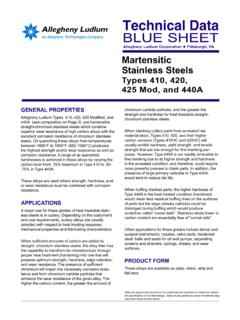
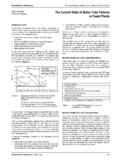

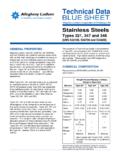

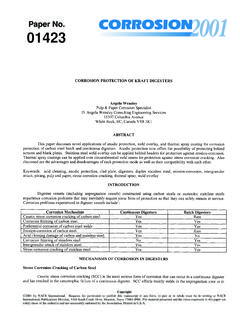


![Caviwave Sonic Console TD[2] - mplusmedtech.com](/cache/preview/7/a/c/5/5/2/9/c/thumb-7ac5529cc9ea5df817c40eccb2a6fadf.jpg)
